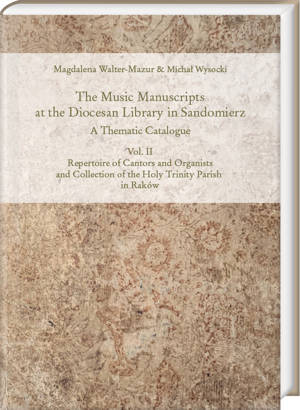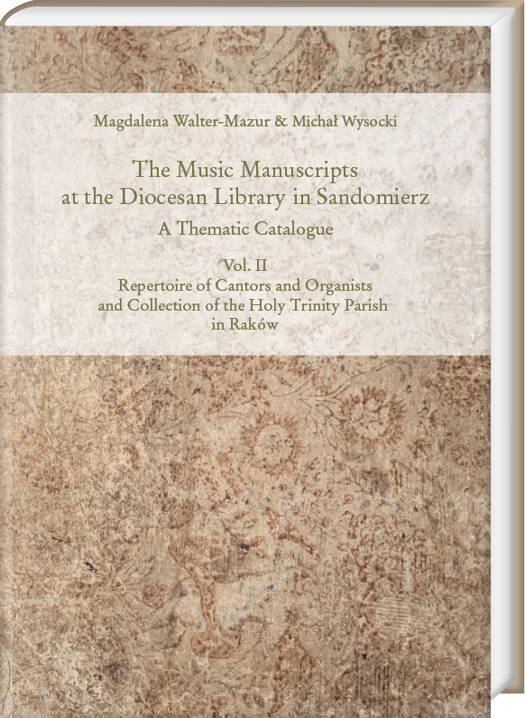
- Afhalen na 1 uur in een winkel met voorraad
- Gratis thuislevering in België vanaf € 30
- Ruim aanbod met 7 miljoen producten
- Afhalen na 1 uur in een winkel met voorraad
- Gratis thuislevering in België vanaf € 30
- Ruim aanbod met 7 miljoen producten
Zoeken
The Music Manuscripts at the Diocesan Library in Sandomierz. a Thematic Catalogue
Volume 2: Repertoire of Cantors and Organists and Collection of the Holy Trinity Parish in Rakow
Magdalena Walter-Mazur, Michal Wysocki
Hardcover | Engels
€ 87,95
+ 175 punten
Uitvoering
Omschrijving
The second volume of the catalog consists of two parts preceded by an extensive Introduction. The first part covers mainly the repertoire used by male and female cantors and organists from the 18th-century convent centres. These are primarily masses, songs and organ pieces of local origin, showing the lesser-known face of the then church musical culture. A separate place in this context is occupied by a collection of enigmatic polychoral works for female voices from the first quarter of the 17th century. The second part catalogs the collection of the vocal-instrumental ensemble of the then Marian sanctuary in Rakow, consisting of the repertoire collected in the 1740s. It is extremely valuable due to the unique manuscripts of outstanding Polish composers of the Baroque period, including G. G. Gorczycki and D. Stachowicz, as well as an interesting international repertoire, mainly from German-speaking countries (K. J. Einwald, J. A. Hasse, M. Koenigsperger, J. V. Rathgeber). The catalog includes over 1,000 records and was created in cooperation with musicologists from the Adam Mickiewicz University in Pozna? with the Editorial Office of the International Inventory of Musical Sources (RISM) in Frankfurt am Main.
Specificaties
Betrokkenen
- Auteur(s):
- Uitgeverij:
Inhoud
- Aantal bladzijden:
- 350
- Taal:
- Engels
Eigenschappen
- Productcode (EAN):
- 9783447120753
- Verschijningsdatum:
- 31/01/2024
- Uitvoering:
- Hardcover
- Formaat:
- Genaaid
- Afmetingen:
- 179 mm x 23 mm
- Gewicht:
- 925 g

Alleen bij Standaard Boekhandel
+ 175 punten op je klantenkaart van Standaard Boekhandel
Beoordelingen
We publiceren alleen reviews die voldoen aan de voorwaarden voor reviews. Bekijk onze voorwaarden voor reviews.











